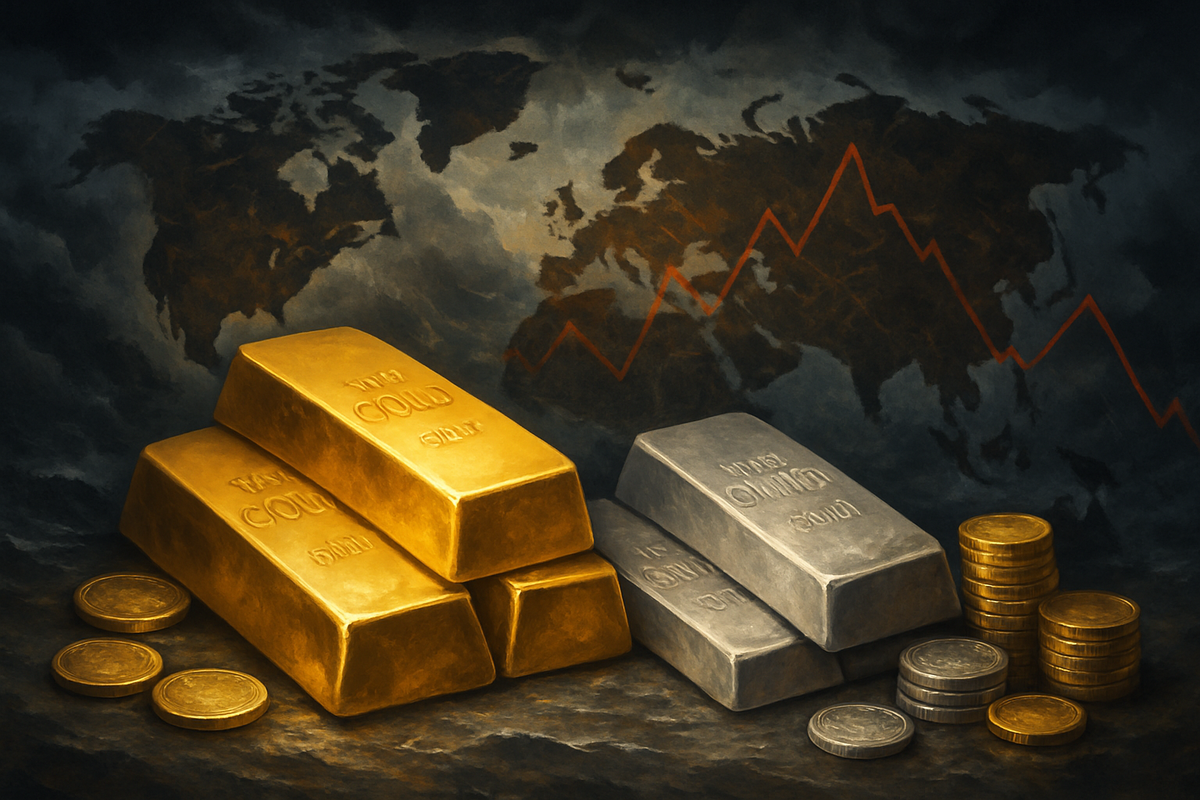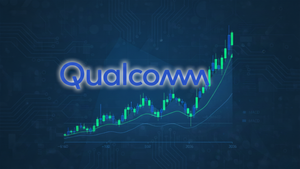
In a financial landscape increasingly defined by volatility and apprehension, investors are flocking to the time-honored safe havens of gold and silver, driving both precious metals to unprecedented price levels. As of October 17, 2025, gold has soared past the $4,300 per troy ounce mark, while silver has breached $50 per troy ounce, reflecting a profound shift in investor sentiment away from riskier assets. This dramatic surge is a direct consequence of deepening economic uncertainty, persistent inflationary pressures, and a complex web of global geopolitical risks that have left traditional markets feeling increasingly vulnerable.
The current rally underscores a collective belief among investors that tangible assets offer the most reliable store of value when confidence in fiat currencies and economic stability wanes. The substantial gains—with gold up approximately 150% in less than three years and silver seeing a 70% jump in 2025 alone—signal a robust and sustained demand. This flight to safety is not merely a knee-jerk reaction but a strategic repositioning, as market participants brace for potential economic headwinds and seek refuge from the pervasive sense of instability gripping the global financial system.
The Unfolding Narrative: A Timeline of Precious Metal Ascendance
The remarkable ascent of gold and silver prices has been a culmination of several interconnected events and trends over the past few years, intensifying significantly in 2024 and 2025. Gold, which had already seen strong gains, definitively broke through the $3,000 per ounce barrier by mid-March 2025 and continued its relentless climb, reaching a record $4,326 on October 16, 2025. Silver, often a more volatile counterpart, mirrored this strength, with futures jumping approximately 70% in 2025 to trade around $51.82 per troy ounce as of October 17, 2025, after briefly hitting a record high of $54.47 earlier in the month.
This surge can be traced back to persistent inflationary pressures that began to escalate in late 2022 and continued through 2023. Unprecedented monetary expansion, particularly the 40% growth in the U.S. M2 money supply from January 2020 to March 2022, laid the groundwork for long-term currency devaluation fears. While central banks like the U.S. Federal Reserve, European Central Bank, and Bank of England aggressively hiked interest rates through 2023 and early 2024 to combat inflation, market sentiment began to anticipate a pivot. This pivot materialized with the Federal Reserve initiating a 50 basis point rate cut in September 2024, signaling a broader easing cycle expected in 2025. Lower interest rates inherently reduce the opportunity cost of holding non-yielding assets like gold and silver, making them more attractive.
Simultaneously, a deteriorating geopolitical landscape has fueled safe-haven demand. Ongoing conflicts, particularly the war in Ukraine and persistent tensions in the Middle East, have created a pervasive sense of global instability. Rising friction between the U.S. and China, particularly concerning Taiwan and trade policies, further exacerbated these anxieties. Gold has historically proven its resilience, delivering positive returns during 70% of major geopolitical events since 2000. Additionally, specific events like reports of steep tariffs in April 2025 prompted immediate investor flight to precious metals, fearing economic fallout and heightened inflation. Central banks, notably from emerging economies, have also been significant players, consistently increasing their gold reserves—purchasing 1,136 tonnes in 2022 and 1,037 tonnes in 2023, and on track to exceed these figures in 2025—underscoring institutional concerns about long-term currency stability.
Initial market reactions have been overwhelmingly positive for precious metal miners and related exchange-traded funds (ETFs). Mining stocks have seen substantial gains, reflecting the increased profitability driven by higher commodity prices. Investors have also poured into gold and silver-backed ETFs, seeking liquid exposure to the metals without direct physical ownership. Conversely, sectors perceived as more vulnerable to economic downturns or reliant on stable global trade have experienced increased selling pressure, highlighting the broader market's defensive posture. The sustained demand for physical silver, particularly in times of financial instability, further indicates that individual investors are also actively participating in this flight to tangible assets.
Corporate Fortunes: Winners and Losers in the Precious Metals Boom
The sustained rally in gold and silver prices creates a clear delineation between potential winners and losers in the corporate landscape. Companies primarily involved in precious metal mining, refining, and related services stand to benefit immensely, while others may face headwinds as capital shifts away from growth-oriented or economically sensitive sectors.
Leading the charge among the beneficiaries are major gold and silver mining companies. Barrick Gold (NYSE: GOLD) and Newmont Corporation (NYSE: NEM), two of the world's largest gold producers, are experiencing significant boosts to their revenue and profitability. Higher per-ounce prices directly translate to fatter margins, allowing these companies to potentially increase dividends, invest in new exploration, or pay down debt. Similarly, pure-play silver miners like Pan American Silver (NASDAQ: PAAS) and Hecla Mining (NYSE: HL) are seeing their fortunes rise. Given that approximately 70-75% of global silver output is a byproduct of mining other metals, companies with diversified operations that include copper, lead, or zinc, but also yield significant silver, will also see an uplift in their overall profitability, improving their balance sheets and market valuations.
Beyond the miners, companies that facilitate investment in precious metals are also thriving. Providers of gold and silver exchange-traded funds (ETFs), such as SPDR Gold Shares (NYSE Arca: GLD) and iShares Silver Trust (NYSE Arca: SLV), are witnessing increased inflows, translating to higher assets under management and corresponding fee revenues. Precious metal refiners, dealers, and vaulting services are also experiencing heightened demand for their services as both institutional and retail investors seek to acquire and store physical bullion. Furthermore, companies that supply mining equipment and services might see increased orders as miners look to expand operations or improve efficiency to capitalize on elevated prices, though this effect typically lags behind direct commodity price movements.
Conversely, the broader economic uncertainty driving the precious metals rally can create challenges for companies in other sectors. Businesses highly sensitive to consumer discretionary spending, such as retailers and hospitality companies, may see reduced demand if economic fears lead to tighter household budgets. Companies reliant on robust global trade and stable supply chains, such as certain manufacturing and logistics firms, could face increased costs and operational disruptions due to geopolitical tensions and potential trade wars. Moreover, financial institutions with significant exposure to credit risk or volatile equity markets might experience pressure on their earnings as investors de-risk their portfolios. While not a direct loss, the opportunity cost of capital shifting into non-yielding assets like gold and silver means less investment flowing into growth-oriented technology or industrial stocks, potentially impacting their valuations and ability to raise capital for expansion.
Wider Significance: A Reordering of Global Capital
The current flight to gold and silver is far more than a transient market phenomenon; it signifies a deeper reordering of global capital and reflects a profound shift in investor confidence within the broader financial ecosystem. This event fits squarely into a long-term trend of increasing skepticism towards traditional fiat currencies and government-backed securities, particularly in an era of unprecedented national debt levels and aggressive monetary policies. The sustained demand for precious metals underscores a global search for tangible, unencumbered stores of value that are perceived to be outside the direct control of any single government or central bank.
The ripple effects of this trend are considerable. For competitors, particularly in the realm of alternative investments, the allure of precious metals poses a significant challenge. Cryptocurrencies, often touted as "digital gold," may find their safe-haven narrative tested as traditional gold and silver demonstrate their historical resilience during periods of acute uncertainty. While some investors may view crypto as a complementary asset, the current environment suggests a preference for established, physical assets. Partners across various industries, from manufacturing to finance, may also need to adapt. For instance, industries heavily reliant on silver for industrial applications, such as solar panels or electronics, could face higher input costs, potentially affecting their profitability and competitiveness.
Regulatory and policy implications are also noteworthy. The aggressive central bank buying of gold, particularly by emerging economies, signals a strategic diversification away from the U.S. dollar, potentially accelerating a move towards a more multipolar global financial system. This trend could prompt discussions around the stability of reserve currencies and the future role of international financial institutions. Governments might also face increased pressure to manage inflation and reduce national debt, as their citizens and institutions increasingly express a lack of confidence in the long-term purchasing power of their national currencies.
Historically, this surge in precious metal demand echoes periods of significant economic and geopolitical upheaval, such as the 1970s oil crises, the aftermath of the 2008 financial crisis, or even during the initial phases of the COVID-19 pandemic. In each instance, gold and silver acted as critical hedges against inflation, currency debasement, and systemic risk. The current environment, however, combines persistent inflation with heightened geopolitical fragmentation and unprecedented levels of global debt, creating a unique cocktail of risks that makes the present situation particularly potent. The sustained nature of this rally suggests that investors are not merely reacting to a single event but are positioning for a prolonged period of instability, drawing parallels to historical precedents where precious metals served as the ultimate financial anchor.
What Comes Next: Navigating the Golden Age of Uncertainty
Looking ahead, the trajectory of gold and silver prices will largely hinge on the evolution of global economic conditions and geopolitical stability. In the short term, the momentum behind precious metals appears robust. Continued inflationary pressures, further interest rate adjustments (especially if central banks continue easing cycles), and any escalation in geopolitical tensions are likely to provide further tailwinds for gold and silver. Investors should anticipate continued volatility, but with a general upward bias, as the market digests new economic data and geopolitical developments. The $4,500 psychological barrier for gold and the $60 mark for silver could become near-term targets if current trends persist.
In the long term, the narrative for precious metals remains compelling, albeit with potential for consolidation. Should global economies stabilize and geopolitical risks recede significantly, some of the safe-haven demand might diminish. However, the underlying structural issues—such as persistent national debt, the potential for future inflationary cycles, and the ongoing diversification efforts by central banks—suggest that gold and silver will retain their fundamental appeal as a store of value. Strategic pivots for investors might include maintaining a diversified portfolio with a significant allocation to precious metals as a hedge, while also exploring opportunities in sectors that can adapt to or benefit from this new economic reality, such as renewable energy or technologies that enhance supply chain resilience.
Market opportunities may emerge in specific niches within the precious metals complex. For instance, companies involved in silver recycling could see increased profitability as higher prices make extraction from industrial waste streams more economically viable. Furthermore, the development of new, cost-efficient mining technologies could become more attractive. Challenges include the risk of a sharp market correction if a sudden, unexpected resolution to global crises emerges, or if central banks unexpectedly reverse their monetary policies. However, given the current landscape, such a drastic reversal seems less probable in the immediate future.
Several potential scenarios could unfold. In an optimistic scenario, a gradual de-escalation of geopolitical tensions and a successful taming of inflation without a severe recession could lead to a more balanced market, where precious metals stabilize at elevated levels. In a more pessimistic scenario, continued stagflation, coupled with escalating global conflicts, could propel gold and silver to even more extreme highs, further eroding confidence in traditional financial assets. A middle-ground scenario might see continued choppy markets, with precious metals serving as a consistent, albeit sometimes volatile, anchor in investor portfolios, reacting sharply to each new piece of economic or geopolitical news.
Comprehensive Wrap-Up: Anchoring Portfolios in Turbulent Times
The current surge in gold and silver prices is a resounding testament to their enduring role as safe-haven assets in an increasingly uncertain world. The key takeaways from this event are clear: persistent inflation, growing recession fears, and a complex web of global geopolitical risks have collectively driven investors to seek refuge in tangible stores of value. Gold's ascent past $4,300 per ounce and silver's breach of $50 per ounce are not merely symbolic milestones; they represent a significant reallocation of capital and a collective expression of anxiety regarding the stability of the global financial system.
Moving forward, the market is likely to remain highly sensitive to macroeconomic indicators and geopolitical developments. Investors should anticipate continued volatility but recognize that the fundamental drivers behind the precious metals rally are deeply entrenched. The trend of central bank gold accumulation, coupled with retail and institutional demand, provides a strong floor for prices, suggesting that these elevated levels may represent a new normal rather than a temporary spike. The "sticky" nature of inflation and the ongoing structural challenges in silver supply, in particular, lend further support to this outlook.
The lasting impact of this period could be a permanent shift in portfolio construction, with a greater emphasis on diversification into real assets. The notion of gold and silver as mere hedges against inflation has evolved; they are increasingly viewed as fundamental components for capital preservation and wealth protection against systemic risks. What investors should watch for in the coming months includes any shifts in central bank rhetoric regarding interest rates, the progression of major geopolitical conflicts, and key economic data releases that could signal either a deepening of economic woes or a path towards stabilization. The current environment strongly suggests that precious metals will continue to play a critical, perhaps even more central, role in investor strategies for the foreseeable future.
This content is intended for informational purposes only and is not financial advice





